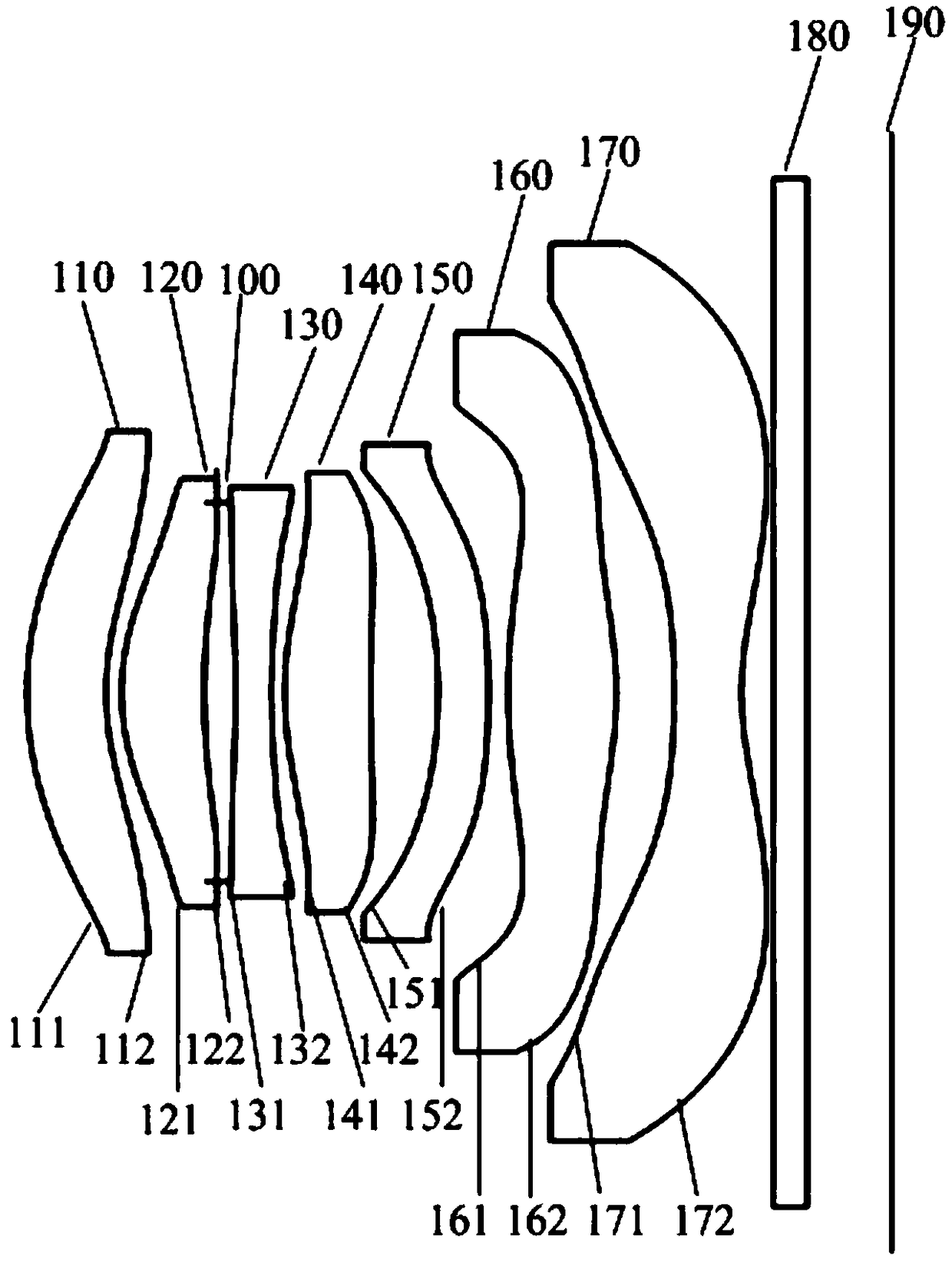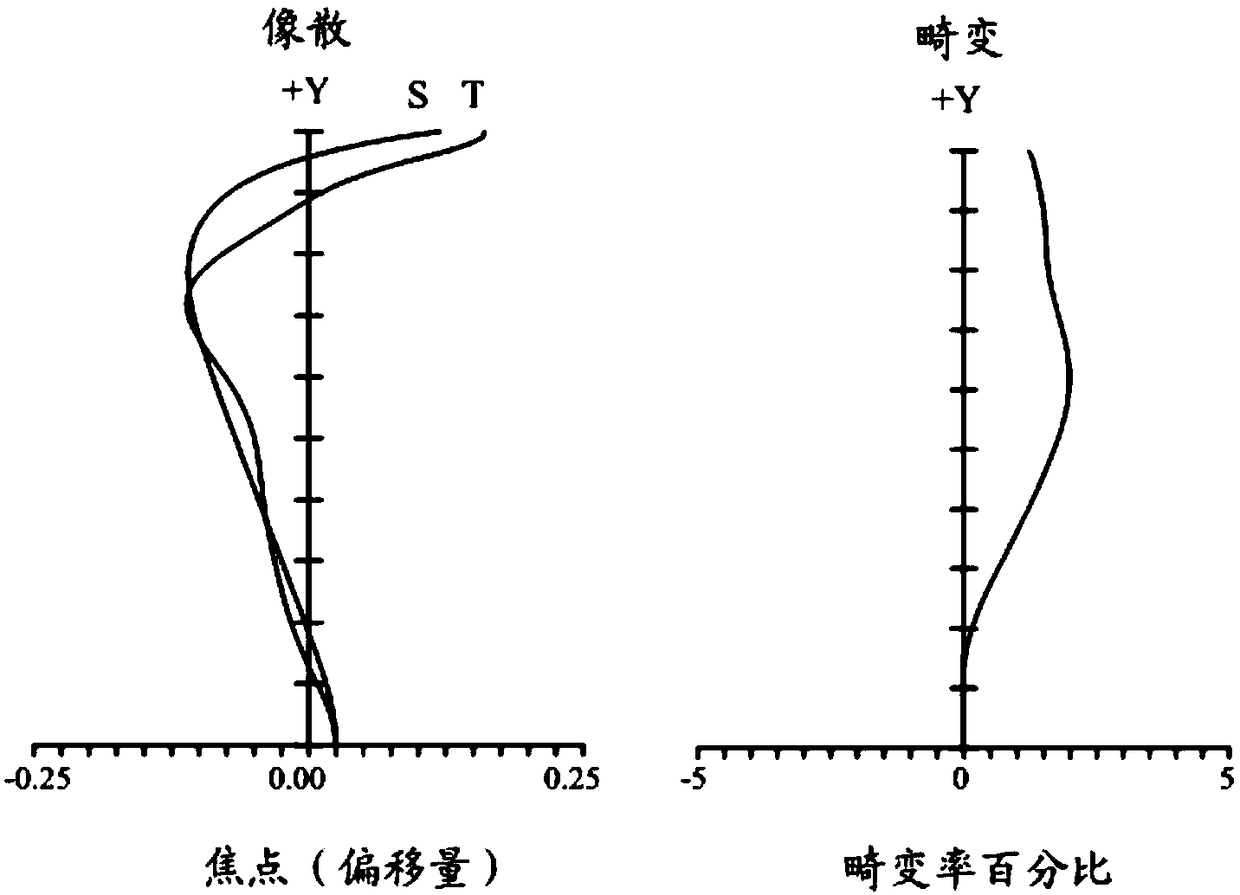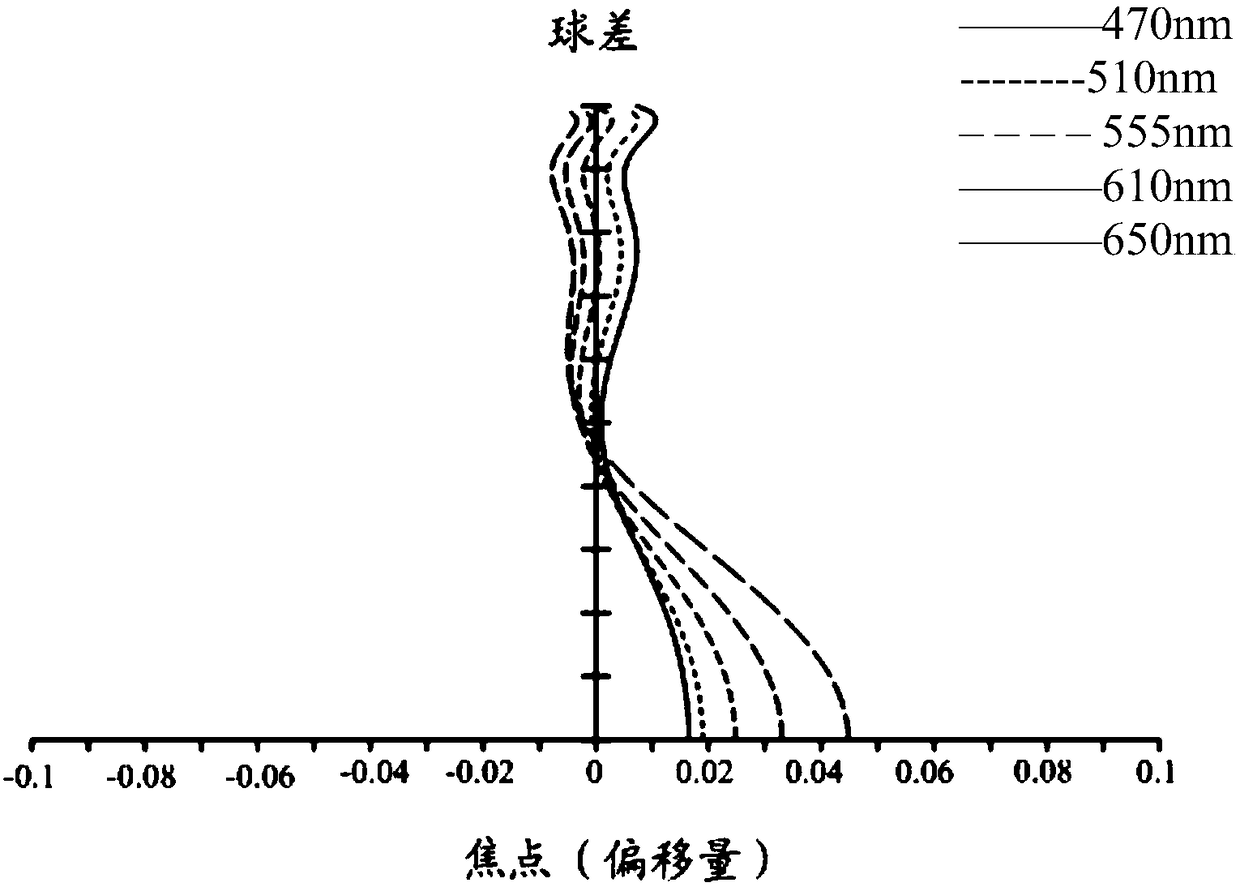Image pickup lens group and electronic device
A camera lens and lens technology, applied in optical components, optics, instruments, etc., can solve problems such as the inability to meet the photography system, and achieve the effect of meeting application requirements, excellent field of view, and good imaging quality.
- Summary
- Abstract
- Description
- Claims
- Application Information
AI Technical Summary
Problems solved by technology
Method used
Image
Examples
Embodiment 1
[0073] Please refer to figure 1, shows a schematic structural view of the imaging lens group of Embodiment 1. As can be seen from the figure, the imaging lens group of this embodiment includes a first lens 110, a second lens 120, a diaphragm 100, a third lens 130, a fourth lens 140, and a fifth lens 150 arranged in sequence along the optical axis from the object side to the image side. , the sixth lens 160 and the seventh lens 170, each lens has an object side facing the object side and an image side facing the image side, and the object side and the image side of each lens are aspherical.
[0074] The first lens 110 has negative refractive power, its object side 111 is convex at the near optical axis, and its image side 112 is concave at the near optical axis. The second lens 120 has positive refractive power, its object side 121 is convex at the near optical axis, and its image side 122 is concave at the near optical axis. The third lens 130 has negative refractive power, ...
Embodiment 2
[0087] Please refer to Figure 4 , shows a schematic structural view of the imaging lens group of Embodiment 2. As can be seen from the figure, the imaging lens group of this embodiment includes a first lens 210, a second lens 220, a diaphragm 200, a third lens 230, a fourth lens 240, and a fifth lens 250 arranged in sequence along the optical axis from the object side to the image side. , the sixth lens 260 and the seventh lens 270, each lens has an object side facing the object side and an image side facing the image side, and the object side and the image side of each lens are aspherical.
[0088] The first lens 210 has negative refractive power, its object side 211 is convex at the near optical axis, and its image side 212 is concave at the near optical axis. The second lens 220 has positive refractive power, its object side 221 is convex at the near optical axis, and its image side 222 is concave at the near optical axis. The third lens 230 has negative refractive power...
Embodiment 3
[0096] Please refer to Figure 7 , shows a schematic structural view of the imaging lens group of Embodiment 3. As can be seen from the figure, the imaging lens group of this embodiment includes a first lens 310, a second lens 320, a diaphragm 300, a third lens 330, a fourth lens 340, and a fifth lens 350 arranged in sequence along the optical axis from the object side to the image side. , the sixth lens 360 and the seventh lens 370, each lens has an object side facing the object side and an image side facing the image side, and the object side and the image side of each lens are aspherical.
[0097] The first lens 310 has negative refractive power, its object side 311 is convex at the near optical axis, and its image side 312 is concave at the near optical axis. The second lens 320 has positive refractive power, its object side 321 is convex at the near optical axis, and its image side 322 is concave at the near optical axis. The third lens 330 has positive refractive power...
PUM
 Login to View More
Login to View More Abstract
Description
Claims
Application Information
 Login to View More
Login to View More - R&D
- Intellectual Property
- Life Sciences
- Materials
- Tech Scout
- Unparalleled Data Quality
- Higher Quality Content
- 60% Fewer Hallucinations
Browse by: Latest US Patents, China's latest patents, Technical Efficacy Thesaurus, Application Domain, Technology Topic, Popular Technical Reports.
© 2025 PatSnap. All rights reserved.Legal|Privacy policy|Modern Slavery Act Transparency Statement|Sitemap|About US| Contact US: help@patsnap.com



